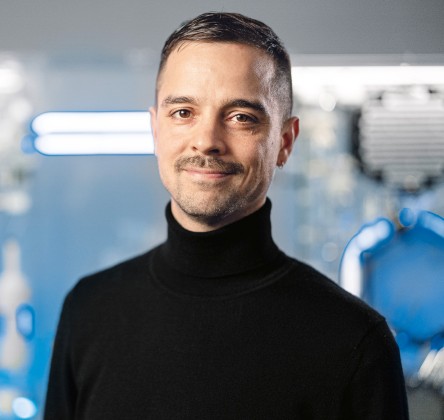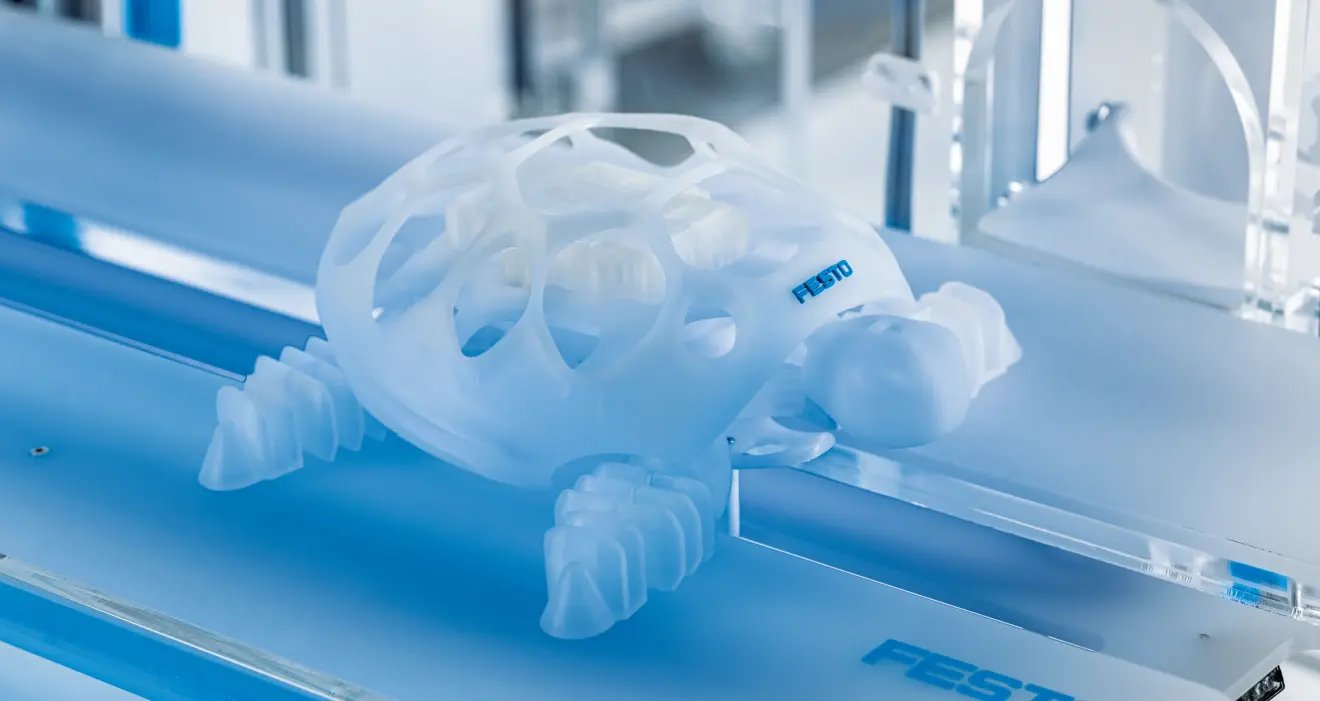Tortoises walk on land by alternately moving its legs and carry their shells above the ground. When filled with compressed air, the BionicTurtleWalker simultaneously pushes its diagonally positioned legs downwards and pushes itself forwards - just like its natural model. At the heart of the BionicTurtleWalker is a pneumatic logic module developed by the Plant Biomechanics Group of the Botanic Garden Freiburg and the "Living, Adaptive and Energy-autonomous Materials Systems (livMatS)" Cluster of Excellence at the University of Freiburg.
Pneumatic logic module
This control center” of the turtle takes over the tasks that are otherwise performed by valves and electrical controls in pneumatic systems. This allows it to switch the movements of the four legs precisely and only requires one tubing connection to the outside for the compressed air supply.
The pneumatic logic modules developed have several advantages over conventional systems. They consist of two valve chambers with which Boolean operations can be carried out.
Thanks to their design, they can be additively manufactured directly from flexible material and operated with low pneumatic pressure, which greatly reduces production costs, system complexity, and operating costs.

"Pneumatic logic control opens up new areas of application for completely flexible soft robots where classic, electrically controlled systems would fail.”
Dr. Falk Tauber, Cluster of Excellence livMatS at the University of Freiburg
Flexible yet robust material
Everything - from the shell to the pneumatic logic module to the legs of the BionicTurtleWalker - is 3D printed and made of thermoplastic polyurethane (TPU). This material combines the properties of rubber and polymer: It is durable, flexible and yet robust. The logic module can therefore withstand up to 900 kg of surface load.
This allows the logic module to deform and then return to its original state. In terms of the circular economy, the TPU can be melted down and reused.
Outlook and potential
The technology of pneumatic logic modules with TPU is also suitable, for example, for applications in which humans and robots work together directly. By combining several modules, pneumatic control elements for pneumatic soft robots could be produced that can have any number of degrees of freedom.
This results in numerous areas of application. For example, one module alone can control the opening and closing of a pneumatic gripper. For more complex applications, modules can be combined and produced as a single block or integrated directly into deflectors.

“When we combine air with flexible materials, there is still a lot of innovation to be developed. This combination has the potential to make robots even more alive.”
Sebastian Schrof, designer in the Festo bionics team
Part of the Incredible Machine
The BionicTurtleWalker is part of the Incredible Machine,the anniversary exhibit celebrating 100 years of Festo. It works on the principle of a Rube Goldberg machine, in which one impulse triggers the next. The Incredible Machine demonstrates the history of automation technology from the past to the present, and reflects our diverse skills and extensive expertise.
